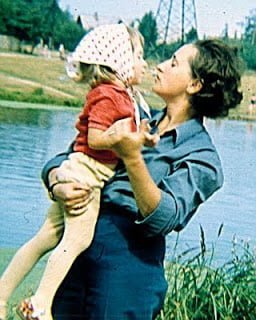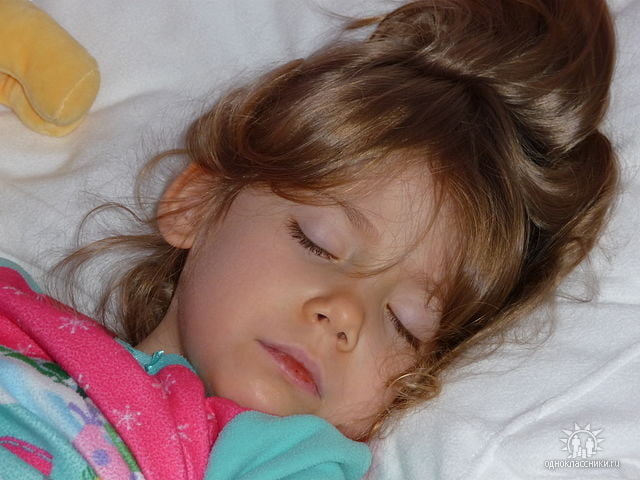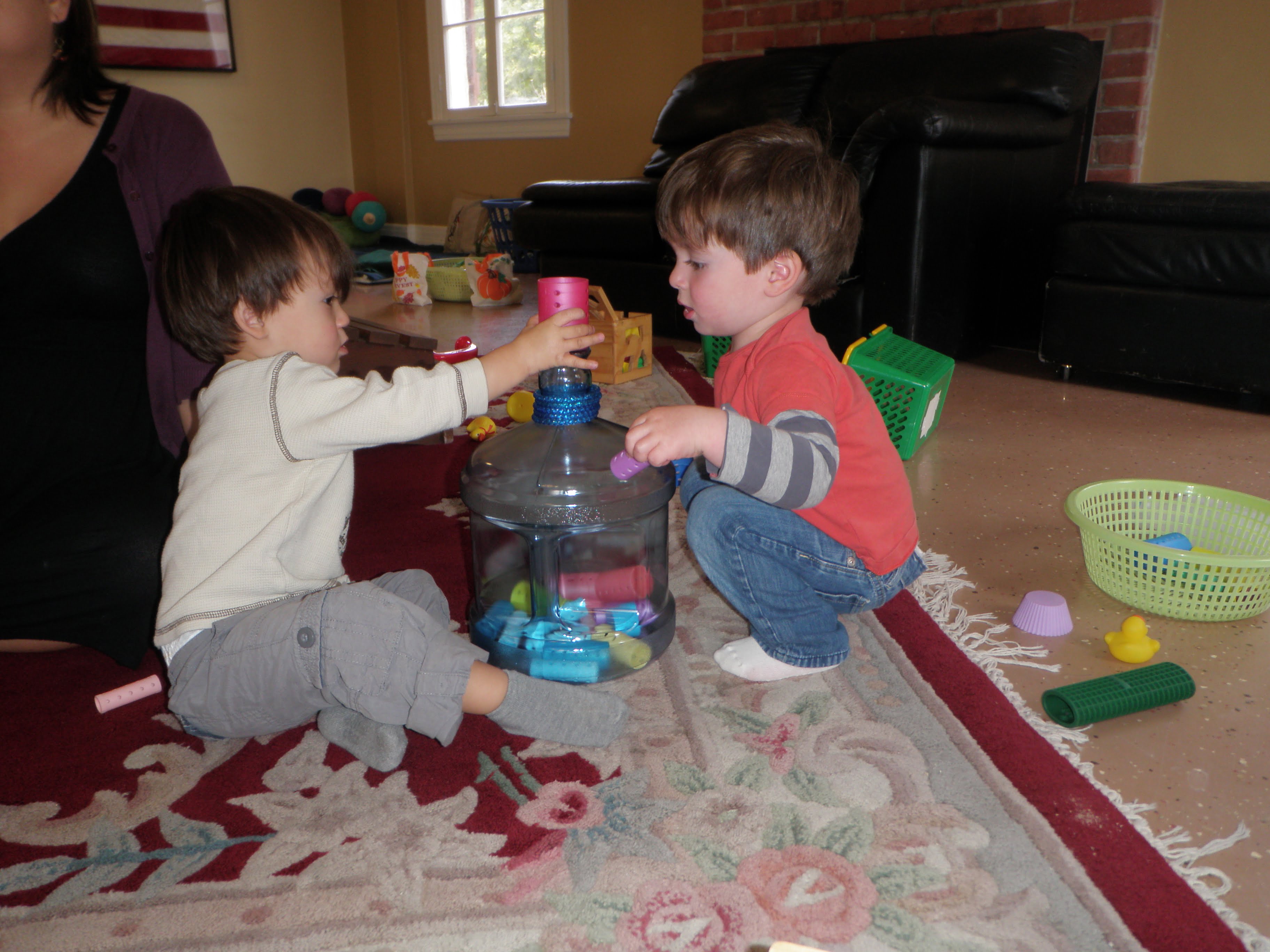RIE® Parent-Infant Guidance classes are a unique opportunity to slow down. For ninety minutes you get to do nothing. Or is it really nothing? So much going on in class for children and parents. We are learning to slow down. We observe, connect with our children and really see what they are doing.
Sometimes our busy minds make it challenging for us not to constantly have something to do. Or maybe we have learned that playing with babies is what we should be doing all the time. Without playing and entertaining, we are not fulfilling our parenting responsibilities. While playing with our baby can be a very pleasant activity for the baby and the parent – today I want to emphasize the importance of time for sensitive observation and independent play.
So, I gently ask parents not to play with the toys while we observe children.
Аnd this is WHY:
- A very young baby (around three months old) – laying on the blanket on their backs. Maybe he is not doing much. It is tempting to pick up the ball and throw it in the air or spin a toy around… Well, I understand this urge, and let’s see this from the baby’s perspective – the world is new!! In addition, the room is new, and the surface that they are laying on is new. Also, the people around them are new, and the body sensations are new. So the baby doesn’t need additional stimulation. When he is ready, he will reach out to the toys and start exploring them. Right now, he is busy processing all the information from around the world.
.
- The mobile baby (around six months old) – spending time on the blanket he might be focused on his movements. This baby is exploring new positions and new moves. He is learning about how to reach, how to turn, and how to go forward or backward. Those are important pieces of knowledge and skills that he is focused on. He doesn’t need someone to roll a ball or car to him; he doesn’t need additional entertainment.
.
- The older baby (around ten months) – begins actively exploring toys and items in the room. He learns about the properties of the objects – material, size, weight, and texture. He also learns the force of gravity when he drops them, and other laws of physics. When we choose to throw the ball in the air, we might be distracting our child from important discoveries.
.
- When a young toddler (around fifteen months old) brings us a toy – it is a great opportunity to share that moment. You can look at the toy together, and maybe name the color, shape, texture, or size. Just don’t rush through the process. We don’t have to quickly start teaching and modeling how to use the toy “properly” – save this discovery for the child.
Let’s take a moment and observe what young children are capable of doing, and how they play and explore.
Sensitive observation – you sit comfortably and you bring your thoughts to the present moment. You are not going through your “to-do list”. You are ready to watch what your child is doing rather than having an agenda to teach him something.
Sensitive observation helps you:
- Learn about your child, how he moves, what he likes and dislikes, how he discovers and explores.
- Create a special connection with your child. Children always know where our attention is; they know when we are present vs. when we try to multitask.
- Send your child a message that what he is doing is important and valuable to us.
Read more about how to trust in the child to be an initiator, an explorer, and a self-learner.
Email me or call for more information about RIE® Parent-Infant Guidance™ Classes.
Wishing you all the best in the difficult yet exciting journey of parenting!
Warmly,
Teacher Kira














